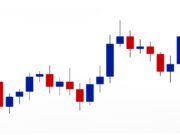On Monday, BTC fell to its lowest level since July 2021, falling in line with sagging U.S. stock markets upon fears about the Fed’s aggressive tightening policy. BTC, the world’s most valuable digital coin by market capitalization, fell to $30,331.28, marking Monday as its fifth consecutive session drop.
BTC hit its all-time peak of $69,000 in November last year. However, BTC has fallen by 19% this May, dropping by over 50% from November’s high point. In other words, the currency has lost at least half of its potential value in a little over six months.
Other digital currencies have been severely impacted as well. These currencies are proving to be just as dangerous as stocks, therefore making them vulnerable to the same issues that have been pushing down the S&P 500, Dow, and Nasdaq.
What could this mean for both digital currencies and the broader marketplace? How concerned should investors – like many of us – be?
In the last week, Ethereum (ETH), Solana (SOL), Binance (BNB), and Cardano (ADA) have all dropped around 15%, while Dogecoin (DOGE) has fallen around 10%.
Michael Kamerman, the current CEO of the trading platform Skilling, pointed out that “Volatile trading in digital assets has not been that unusual in previous years. Cryptocurrencies are increasingly moving in sync with tech stocks with investors treating both as risk assets and often retreating to safer corners of the market during bouts of market volatility.”
For the long haul, Kamerman is still enthusiastic about BTC. Digital currency is attracting the attention of more hedge funds and other large institutions, as well as several global central banks. Kamerman added, however, that BTC is “not immune to the global inflation risk spreading across most other asset classes. Therefore we should expect to see the downward trend continue.”
Interestingly, many digital currency investors believe that BTC is a digital-era counterpart of gold, a possible flight-to-safety investment, and an inflation hedge. However, the digital market’s price movement implies that the market does not see these highly volatile assets as stable repositories of value during times of economic instability. Gold has always had an adverse association with stock prices, which continues to play out in 2022. While stock prices have declined, for example, gold is up 3% in 2022, compared to a 16% drop in the S&P 500 year to date.
Fears of chronically rising U.S. inflation, as well as the possibility of extraordinarily harsh Fed actions to combat it, have fueled stock market selling pressure. The consumer price index (CPI) increased by 8.5% from a year earlier, marking the greatest level of inflation in the U.S. since 1981. The market sell-off has also continued this week, confirming that investors are looking for a safe haven from the possible adverse economic effects of the Fed’s policy – and they’re obviously not finding it in the digital currency market.
As the market sell-off has continued this week, stocks fell for the third day in a row as concerns about inflation – and whether the Fed can get prices down without triggering a recession – grew. The drops come ahead of the Labor Department’s release of April consumer price statistics, which are expected to show price increases moderating somewhat but not enough to bring inflation down from 40-year highs.
The Dow Jones Industrial Average dropped almost 600 points, or roughly 2%, on Monday. The Nasdaq plunged by 4.3%, while the S&P 500 dropped more than 3% to its lowest levels in a year. The losses were broad, but tech companies were among the worst affected. And, keep in mind that digital currencies and stocks aren’t the only ones hurting on Wall Street. In addition, there has been a sell-off in U.S. government bonds, which means that their yields would diminish in a period of rising inflation.
As you’ve read, the numerous fears on Wall Street are all basically the same, and investors are starting to believe the Federal Reserve is acting too late to combat inflation, having already hiked rates by a quarter percentage point in March. The Fed has told us that its goal is to set us up for a “soft landing,” in which growth is slowed just enough to combat inflation without triggering a major recession. Time will tell, but patience tends to have a limit.














